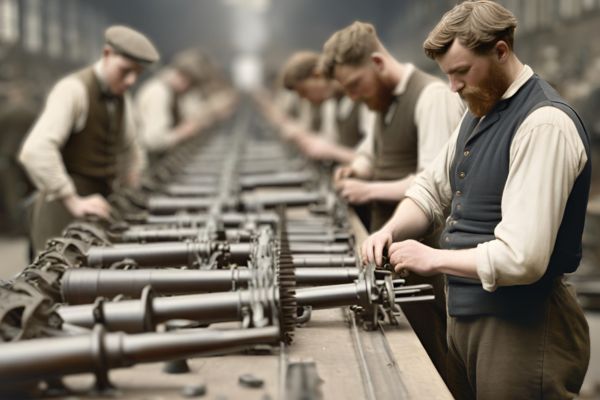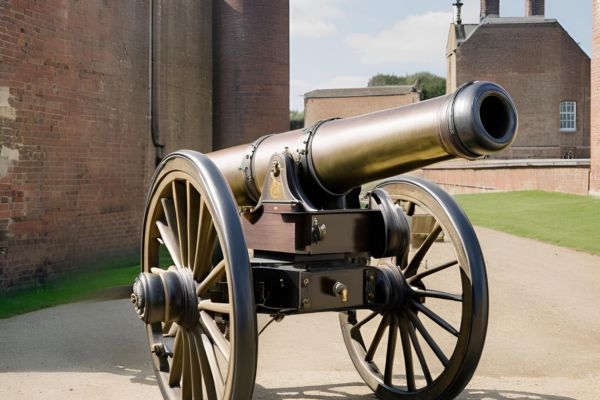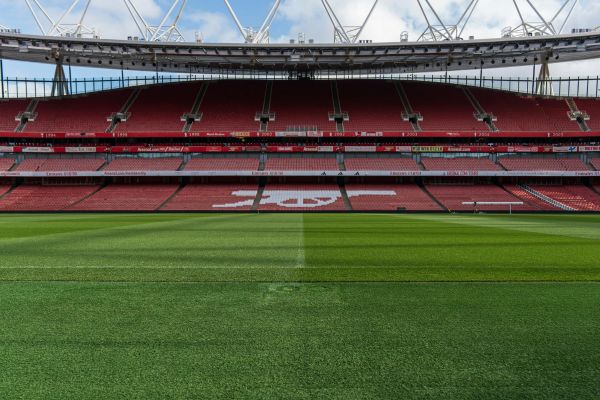“Slowly, slowly… easy now.”
A man in a yellow hard hat stands watching, eyes fixed on the heavy iron object dangling in mid-air. It’s painted black, has small wheels at its base, and it’s being carefully lowered by straps from a truck crane. A few more nudges of the lever, and the wheels touch the ground with a solid thunk.
“That’s the two of them. Time to go home,” he says.
Moments later, the truck drives away, leaving behind two old cannons. Not on a battlefield. But outside a football stadium—the Emirates Stadium, no less. The modern home of Arsenal Football Club.
So what are a couple of 19th-century cannons doing outside one of the sleekest stadiums in world football?
Well, they’re there to honour the past—the club’s own origin story.
A Club Built by Workers, Armed with Football

When you think of Arsenal, you probably picture red shirts, north London derbies, and that iconic cannon on the badge. But the cannon isn’t just a cool symbol. It’s a direct link to how the club began—and who built it.
Arsenal Football Club was born in 1886, not in a pub or on a pitch, but inside the Royal Arsenal armament factory in Woolwich, south London. The men who started the team weren’t just footballers—they were factory workers making guns, ammunition, and, yes, cannons for the British military. They originally called the team Dial Square, after one of the factory’s workshops, but soon changed it to Royal Arsenal, then Woolwich Arsenal.
That cannon on the badge? It wasn’t chosen for branding. It was part of their daily life. It’s what they built.
How the Cannon Stayed

The first version of the cannon appeared on Arsenal’s badge back in 1922. It looked exactly how you’d expect: long barrel, old-school wheels, facing east. But as the club evolved, so did the design.
By the 1940s, the cannon had flipped to face west—possibly symbolising the club’s move from south to north London. A few years later, a more ornate version of the badge appeared, complete with a Latin motto: Victoria Concordia Crescit, or “Victory Through Harmony.”
And then in 2002, Arsenal gave the crest a modern facelift. Cleaner lines, simplified design—but the cannon stayed. Always.
Through the moves, the manager changes, the highs and lows of football, the cannon has never disappeared. It’s more than decoration—it’s DNA.
From Woolwich to Highbury to Emirates

Arsenal’s home may be in north London now, but they’ve never lost touch with their roots in Woolwich. Even when they moved to Highbury in 1913, and later to the Emirates Stadium, the nickname “The Gunners” stayed. So did the cannon on the shirts. And when Emirates opened its doors in 2006, the club made a clear decision: history would come too.
Those decommissioned cannons standing guard outside the stadium aren’t just museum pieces. They’re reminders. Of a club founded by workers. Of a factory that helped shape a team. Of a time when football and industry were one and the same.
A Badge That Still Means Something

So next time you see Arsenal’s badge, or pass those cannons outside the Emirates, you’ll know: they’re not just there for show. They’re markers of identity. Of a club that began with grit, sweat, and steel—and still carries that spirit today.
That cannon tells you everything you need to know. This is Arsenal. This is The Gunners.
